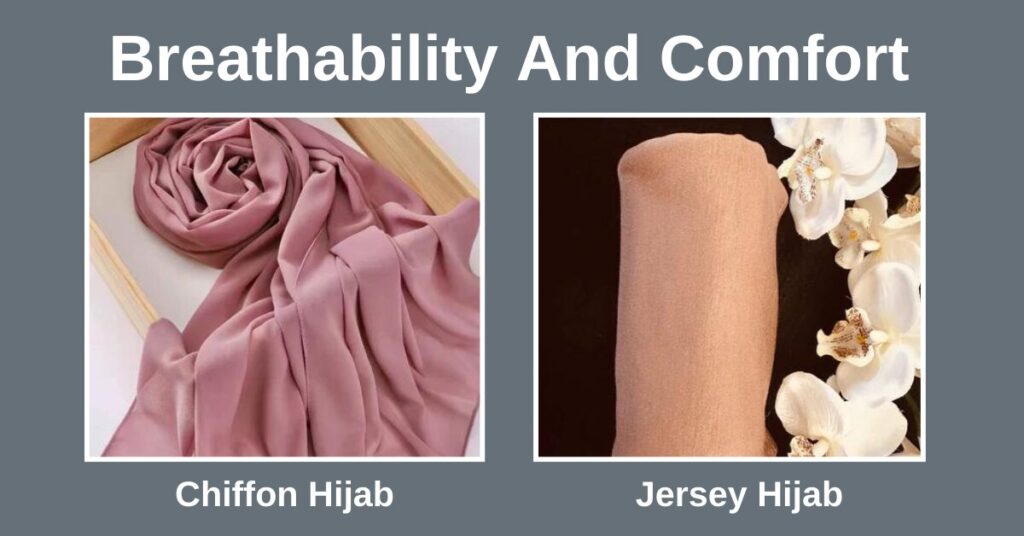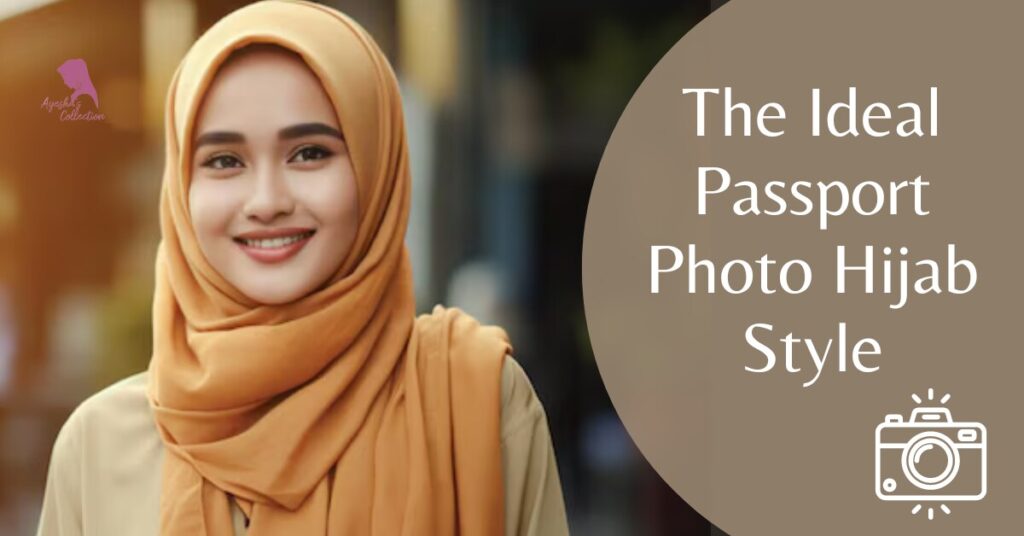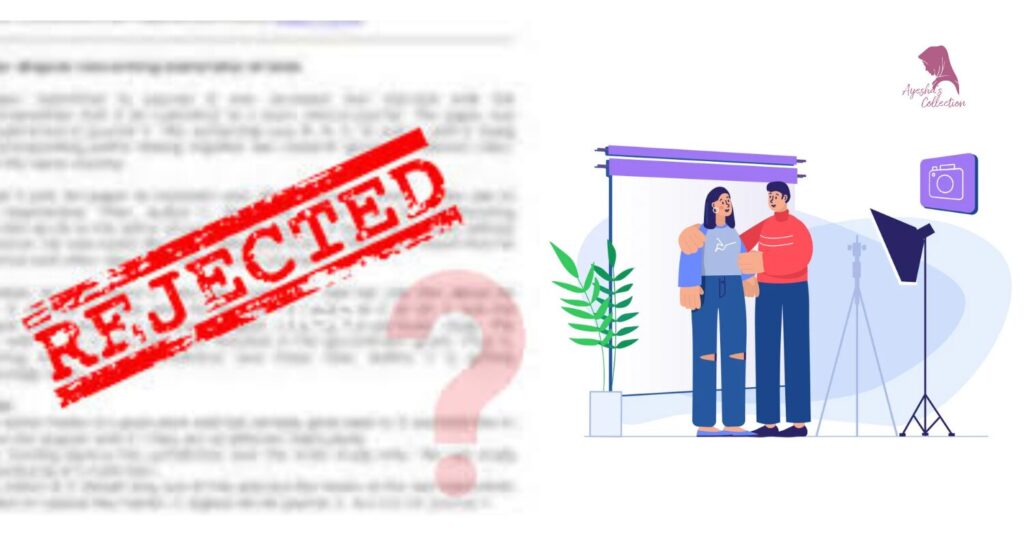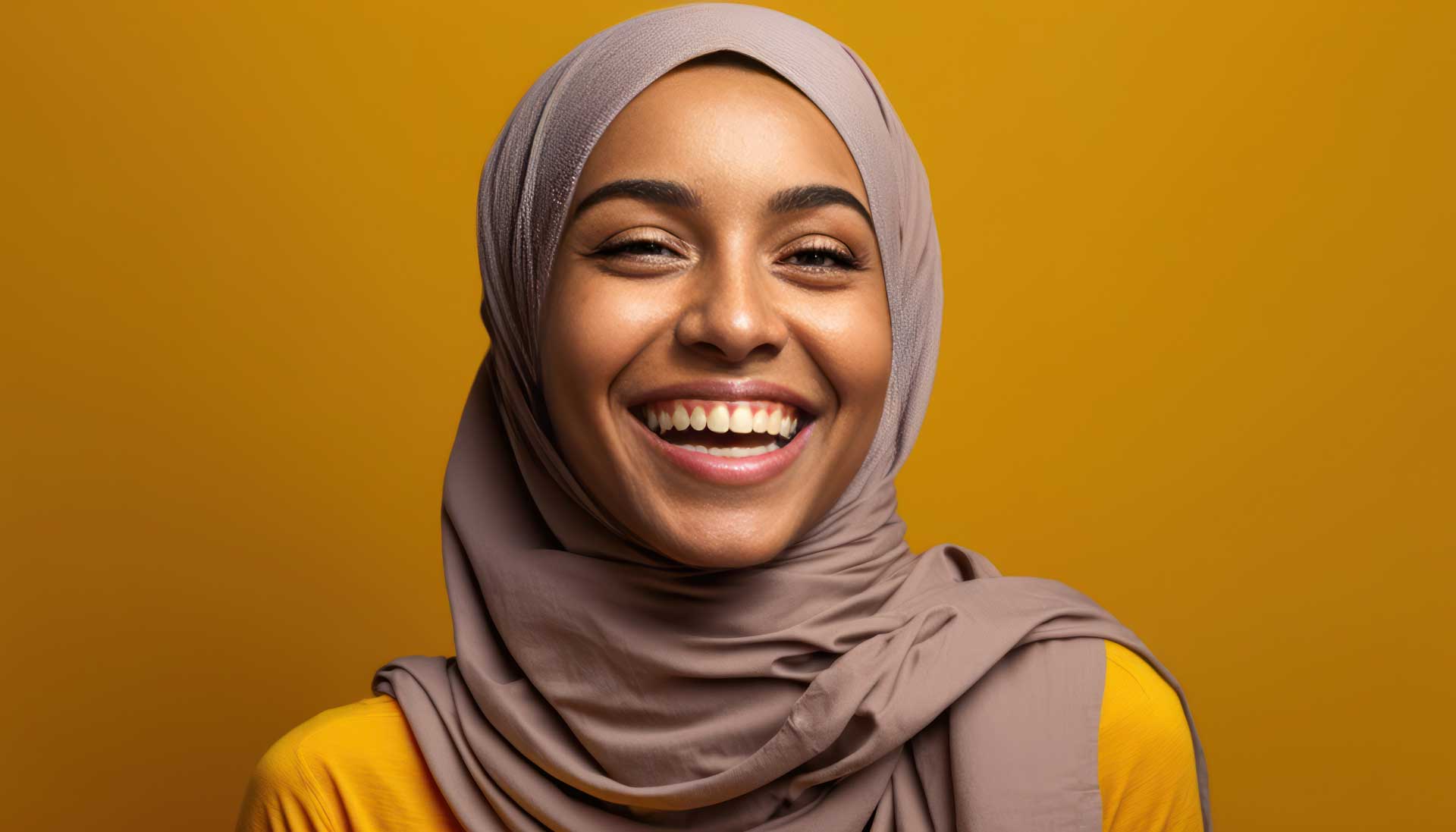We all know that passport photo is an important part of our visa application. When this situation arises, the question comes to a Hijabi girl’s mind “How to Wear Hijab for Passport Photo?” In this blog we will go into detail about how to wear hijab while fulfilling passport photo requirements
To wear a hijab for a passport photo, ensure your face is visible from the forehead to the chin. Keep the hijab neat and avoid shadows on your face.
The hijab, a traditional headscarf worn by many Muslim women, can pose challenges when taking official documents like passport photos, but it’s important to balance religious practices with passport photo regulations. The key is to present a clear, unobstructed view of your face, as government authorities require for identification purposes.
A well-adjusted hijab that frames the face without covering key features ensures compliance with international standards. This guide aims to assist in preparing for a passport photo while respectfully adhering to one’s modesty requirements. Understanding these rules can help avoid any potential issues during travel, making for hassle-free experiences at borders and checkpoints. Embrace the simplicity of this process and you’ll produce a valid passport photo without compromising on your dress code.
Cultural Respect And Legal Requirements
When preparing for a passport photo, respecting cultural norms is as essential as adhering to legal standards. Individuals who wear a hijab must balance their modesty with the necessity for clear identification. Different countries have specific regulations that must be followed. This ensures that cultural practices are honoured while meeting international passport photo criteria.
Balancing Modesty With Identification
Wearing a hijab in a passport photo requires showing your face clearly from the bottom of your chin to the top of your forehead. Ensuring the hijab does not cast shadows or cover essential facial features is crucial. This allows for proper identification while maintaining modesty. Follow these steps:
- Choose a solid-colored hijab that contrasts with your skin tone and background.
- Ensure the hijab frames your face and leaves the face unobstructed.
- Use accessories and pins that cancot cause reflections or obscure the face.
Here you can choose Another different premium hijabs from Ayeshas Collection
Regulations Across Different Countries
Passport photo regulations can vary significantly from one country to another. Consult the official guidelines or check with the embassy or consulate. Here are common terms:
Country | Hijab Acceptance | Specific Rules |
USA | Allowed | Full-face visible, no shadows. |
UK | Allowed | Both edges of the face must be shown. |
UAE | Allowed | No restrictions on the hijab were mentioned. |
When applying for a passport, always check the latest requirements for your specific country. Keep in mind that these rules are there to help officials verify your identity quickly.
Selecting The Right Hijab

When preparing for your passport photo, selecting the right hijab matters as much as your pose. The correct choice ensures compliance with government regulations. It also showcases your style.
Fabric Considerations
The fabric of your hijab can make a huge difference in appearance. It’s crucial for both the photo’s quality and comfort level during the shoot. Consider these tips:
- Opt for Non-Reflective Material: Shiny fabrics can cause glare in photos. Choose matte-finish hijabs instead.
- Seek Breathable Textures: Long photo sessions are easier with airy, comfortable fabrics.
- Ensure Proper Coverage: Opt for opaque materials that don’t reveal hair underneath.
Color Choices For Clarity
Color plays a pivotal role in ensuring your facial features are clear in the passport photo. Keep these pointers in mind:
- Contrast With Skin Tone: Select a hijab color that differs from your complexion. This helps your face stand out.
- Avoid Prints and Patterns: Solids are best to prevent distractions. Stick to a simple, single color.
Neutral or Dark Shades: These are preferable for clarity. Bright colors might reflect on the face or overemphasize certain areas.
Right Hijab Fabric and Color for your Passport Photo You can put Ayesha’s Collection in your first choice list. Because here you can fulfill all your requirements very easily
Preparations Before The Photo
Getting your passport photo just right is essential. You want a photo that not only complies with strict regulations but also reflects your true self. The way you wear your hijab for the passport photo requires careful consideration. Here are steps to ensure you present the best version of yourself, while following the rules.
Makeup And Accessories: Keeping It Simple
Use minimal makeup and simple hijab styles for a clean look. Your passport is a vital document, and its picture should be clear and straightforward. Keep in mind the following tips:
- Solid colors that contrast with your skin tone make the best choice for hijabs.
- Avoid heavy makeup; natural looks work best.
- Remove large or shiny accessories that could cause reflections or draw attention away from your face.
- Earrings should be small or removed, as they might get hidden under the hijab or cause light reflections.
- Ensure the hijab frames your face clearly, showing your face from the forehead down to the chin without casting shadows.
Checking Your Country’s Passport Photo Guidelines
Every country has its own rules. It’s important to check them before taking your photo. Here’s how to stay informed:
- Visit your government’s official passport website for the latest guidelines.
- Look for the section on headwear and religious garments.
- Ensure you understand the requirements for visibility of the face and head.
- Check if specific colors or patterns are prohibited.
- Note any restrictions on the dimensions of your hijab in the photo.
By adhering to the country-specific guidelines and presenting a simple, neat appearance, you make the process smoother.
The Ideal Hijab Style

Finding the perfect hijab style for a passport photo requires a balance. The style should maintain the neatness and respect of the hijab while ensuring your face is fully visible. For official documents, the ideal hijab style is simple, clean, and does not cover any part of your face. Let’s explore some techniques to achieve this look.
Tying Techniques For A Neat Appearance
A well-tied hijab is essential for a polished look. Below are some tips:
- Use an underscarf. This will help to keep the hijab in place.
- Choose a non-slippery fabric. It will help your hijab stay neat.
- Secure with pins. Place them where needed for a tight fit.
- Avoid bulky styles. Opt for a simple wrap that lies flat.
Ensuring Full Face Visibility
Your face should be fully visible. Here’s how:
- Keep your forehead clear. Push the hijab a bit back if needed.
- Don’t cover the chin. Wrap the hijab under your chin.
- Show your face’s oval shape. Make sure the sides of your face are visible.
Positioning And Posture
When taking a passport photo while wearing a hijab, your positioning and posture make a big difference. Your photo needs to meet certain regulations, and a proper stance ensures a clear, valid image. Let’s ensure you look your best without compromising the hijab’s requirements.
Correct Head Tilt
Keep your head level for the passport photo. Here’s how to master the correct head tilt:
- Face straight towards the camera.
- Avoid tilting your head up or down.
- Ensure your hijab is not obscuring your face.
- Maintain a natural posture without stiffness.
Eye Contact With The Camera
Making eye contact with the camera is crucial:
- Look directly at the lens.
- Keep your eyes fully open, avoid squinting.
- Your hijab should frame your face without covering your eyes.
- Eyes should be visible and clear.
Lighting And Background
Getting the perfect passport photo involves more than just a great hijab style. Lighting and Background are crucial. These factors can make or break the quality of your photo. You want to ensure your hijab is clearly visible, with no shadows or glare. A plain and contrasting background will make your hijab and face stand out.
Avoiding Shadows And Glare
To prevent shadows and glare, follow these simple tips:
- Use soft, natural light from a window to illuminate your face evenly.
- Position yourself facing the light source to minimize harsh shadows.
- Avoid direct sunlight as it can create strong glare and shadows.
- If using lamps, place them in front of you above eye level to cast even light.
Choosing A Contrasting Background
When selecting a background:
- Pick a plain, light-colored wall that contrasts with your hijab color.
- Avoid patterns or decorations to keep the focus on you.
- Ensure the background is free of shadows and objects.
- Follow your country’s passport photo guidelines for the required background color.
Reviewing The Photo Before Submission
Once you’ve dressed your hijab perfectly for your passport photo, the next crucial step is reviewing the photo before submission. It’s essential to check that your photo meets all guidelines set by the passport authority. A well-reviewed photo saves time and ensures your application progresses without hitches. Let’s dive into how to effectively scrutinize your photo for clarity and compliance, and how to spot common issues that might necessitate a retake.
Checking For Clarity And Compliance
Your face should be fully visible and in focus. The hijab must not cast shadows on your face or obscure your facial features. Here’s what to look for:
- Clear resolution: Ensure your photo doesn’t pixelate.
- Neutral expression: Your mouth should be closed, and eyes open.
- Proper lighting: Look for balanced lighting with no harsh shadows.
- Hijab placement: Confirm your hijab frames your face without covering it.
- Background contrast: The hijab should contrast with the background, usually white or off-white.
It’s crucial to comply with guidelines to avoid photo rejection. Double-check the size specifications and ensure no accessories or reflections interfere with the photo’s quality.
Retakes: Identifying Common Issues
A retake might be necessary if your initial photo doesn’t meet the strict passport criteria. Spot common issues quickly to make the process smoother. Common issues include:
- Glare on glasses: Remove them if possible.
- Uneven lighting: Your face should have uniform light.
- Incorrect size: Verify the photo measures precisely as required.
- Hair or hijab over face: Adjust to show your facial outline.
If you identify any of these issues, arrange a retake promptly. Take the time to address each problem noted to create an ideal photo.
Digital Adjustments: What's Allowed
Digital Adjustments: What’s Allowed when preparing your passport photo is crucial to avoid rejections. Selecting the right outfit, including how to wear a hijab, is just one piece of the puzzle. The process doesn’t end with a snap of the camera. Knowing the guidelines for digital enhancements ensures a smooth acceptance of your photo.
Editing Restrictions
Passport photos need authentic representations of your appearance. Here’s what’s off-limits:
- No altering of facial features.
- Shadow removal on the face or background is not permitted.
- Changes to skin complexion are a no-go.
- Hijab must not cast shadows on the face.
- Background must remain plain white or off-white.
Software Recommendations For Resizing And Cropping
When you need to adjust your photo’s size or crop it, use the right software. Here is a list to help:
Software | Features |
Adobe Photoshop Express | Resizing, Cropping, Format Conversion |
Microsoft Paint | Basic Resizing and Cropping |
GIMP | Free, Open Source, Advanced Features |
Passport Photo Online | Automated Resizing and Background Editing |
Opt for tools that respect the original photo quality to ensure compliance with government standards. Remember, these tools cannot alter your appearance or the hijab layout.
Special Considerations For Children
Preparing children for a passport photo with a hijab requires patience and care. Young ones might feel uncomfortable or restless during the process. It’s essential to address their needs, ensuring they’re comfortable. This section guides parents through the do’s and don’ts for a stress-free experience.
Keeping Youngsters Calm
Children often mirror the emotions of adults around them. Remain calm and composed to set a peaceful tone. Bring a favorite toy or a book to hold their interest if they grow fidgety. Explain the process with simple words to help them understand. This approach encourages cooperation from your child.
Adjusting Hijab For A Child’s Passport Photo
A hijab for passport photos should expose the full face from the bottom of the chin to the top of the forehead. Use a child-sized hijab for a better fit. Avoid patterns or logos as they can distract from the face. Here’s how to adjust the hijab properly:
- Check the fit – Ensure the hijab isn’t too tight or too loose.
- Maintain neutrality – Choose a solid, neutral color that contrasts with the background.
- Pinning – Safely pin the hijab under the chin to prevent it from shifting.
- Visibility – Make certain the full face is visible without shadows.
Following these guidelines will help achieve a valid passport photo for your child, while also respecting religious observance.
Rejection And Resubmission

Getting your passport photo just right is crucial. Imagine this: you’ve picked out your best hijab, followed all the guidelines, and taken that passport photo. But what if it gets rejected? It’s frustrating. Let’s guide you through what often goes wrong and how to fix it.
Typical Reasons For Photo Rejection
When your passport photo gets rejected, it’s usually for a few common reasons. Understanding these will save you time and hassle.
- Head coverings obscuring facial features: Your face must be visible from forehead to chin.
- Shadows on the face or background: Proper lighting is key for a good photo.
- Glares on glasses: Best to remove them if reflections can’t be prevented.
- Incorrect photo size: Check your country’s specific dimensions.
- Facial expressions: Keep a neutral face, no smiling or frowning.
In a table format, the rejection reasons can be summed up:
Rejection Reason | Explanation |
Head Covering Issues | Must not hide any part of your face. |
Shadows and Glare | Even lighting is required on face and background. |
Glasses Reflection | Remove glasses to avoid glare. |
Photo Size Error | Follow the exact dimension requirements. |
Facial Expression | Maintain a neutral look. |
Navigating The Resubmission Process
Don’t worry if your photo gets rejected. There’s always a fix. Here’s what to do:
- Review the rejection reasons: Understand why it was rejected is your first step.
- Retake the photo: Correct the issues and take a new picture.
- Submit the new photo: Send it again following the official guidelines.
Remember, quality matters more than speed. Take the time to get it right. Good lighting, correct sizing, and a clear view of your face will give you a photo that sails through approval.
Expert Tips From Professional Photographers
Welcome to our expert guide on presenting your best self in a passport photo while wearing a hijab. Professional photographers share invaluable tips to help you achieve a look that is both compliant with passport regulations and aesthetically pleasing. Whether you decide to do it yourself or hire a professional, these tips ensure your passport photo meets official standards without compromising your hijab.
Achieving A Professional Look At Home
Taking a passport photo at home can be challenging, but with the right approach, you can produce a professional-quality image. First, find an area with bright, indirect lighting. Ideally, stand in front of a plain, white background to avoid shadows and distractions.
Wear a solid-colored hijab that contrasts well with the background. Smooth out any creases or folds for a clean, crisp appearance. Next, position the camera at eye level about 4 feet away. Ensure the shot includes your head and shoulders clearly.
- Face the camera directly and maintain a neutral expression.
- Keep your hijab neat and tucked in to frame your face without covering it.
- Check lighting to avoid shadows across your face.
- Use a timer or remote to steady your shot.
When To Hire A Professional
In certain situations, it may be more appropriate to seek the services of a professional photographer. If achieving the correct lighting and background proves difficult, or if you prefer the assurance of a specialist, professional services are worth considering. A professional photographer offers expertise in:
Service | Description |
Quality Equipment | High-resolution cameras and professional lighting |
Technical Knowledge | Understanding passport photo requirements |
Editing Skills | Touching up photos while keeping them compliant |
When consulting with a photographer, communicate your needs and ask to review images during the session. This ensures you leave with a photo that you’re pleased with and that meets all the necessary guidelines for your passport.
Staying Informed About Changing Policies
Taking passport photos with a hijab should be a stress-free process. Policies often change and staying up-to-date is crucial. Whether it’s for travel, identification, or legal documentation, a passport photo must meet certain requirements. Make sure your hijab is styled accordingly. It’s important that your face is fully visible from the bottom of your chin to the top of your forehead. Knowing the latest regulations helps avoid delays or rejections.
Upcoming Regulation Changes
Regulations around passport photos can evolve. Countries might update policies to enhance security or reflect cultural considerations. Check official government websites regularly. Look out for announcements related to attire in passport photos. Be aware of changes in requirements like hijab positioning and background contrast.
Resources For Staying Updated
Finding reliable information is key. Below is a list of resources for the latest updates:
- Government Websites: They provide official guidelines and announcements.
- Travel Blogs: These often share personal experiences and can alert you to policy shifts.
- Embassies: Direct contact can clarify specific questions.
- Community Forums: Others in your community may have recent experiences and advice.
Remember, a resource that was accurate a year ago might not be today. Double-check all information for the latest updates.
Conclusion
Navigating passport photo regulations needn’t be stressful. With the tips outlined, wearing a hijab properly is straightforward. Remember, security and identity clarity are paramount, yet respecting cultural practices is equally honored. Rest easy, you’re set to capture a compliant and respectful passport photo that aligns with all guidelines.
Frequently Asked Questions On How To Wear Hijab For Passport Photo?
Can I Wear A Scarf In My Passport Photo?
You may wear a scarf for religious reasons in your passport photo, but it must not cover your face. Ensure your full face is visible without any shadows.
Can I Wear Hijab For Us Visa Photo?
Yes, you can wear a hijab for a US visa photo, but your face must be fully visible from the forehead to the chin, and no shadows should be cast on your face.
Can You Wear A Hijab In A Driver’s License Photo?
Yes, you can wear a hijab in a driver’s license photo, but your full face must be visible from the bottom of your chin to the top of your forehead. Ensure your facial features are clearly visible and not shadowed.
Can I Have My Hair Tied Up In Passport Photo?
Yes, you can have your hair tied up for a passport photo as long as your face remains fully visible and no shadows are cast on your face.





